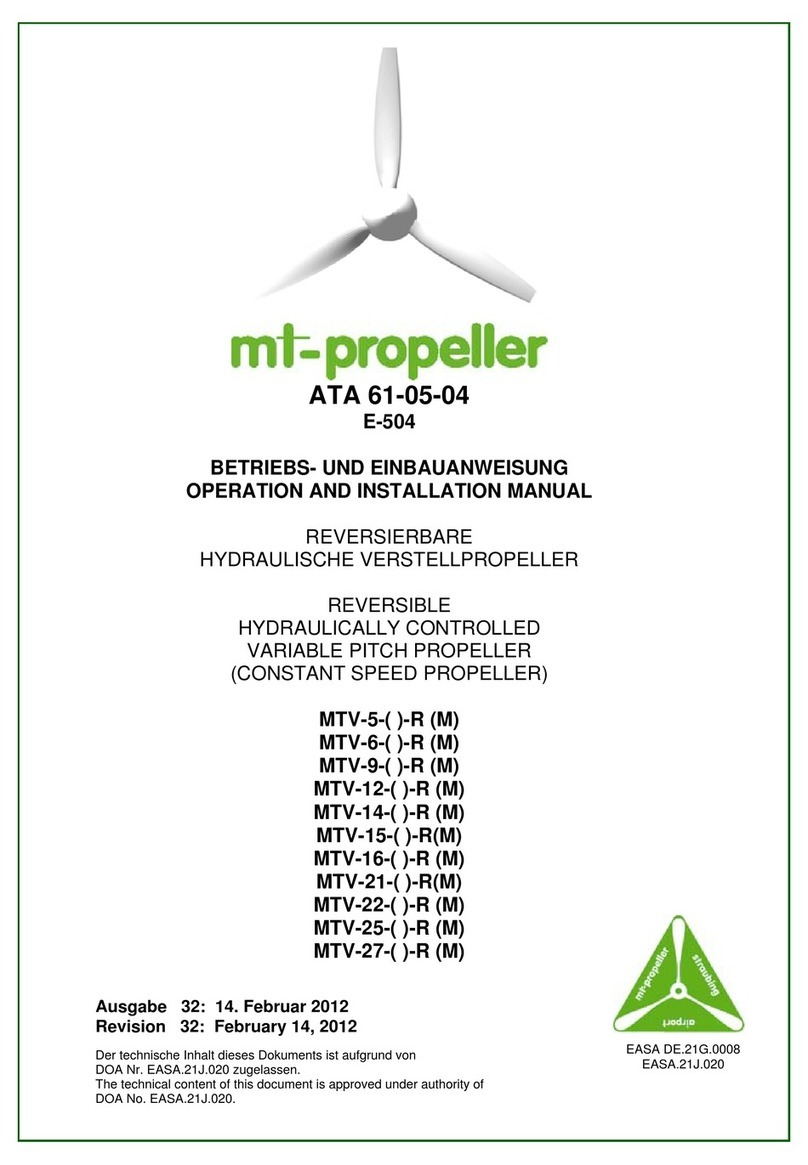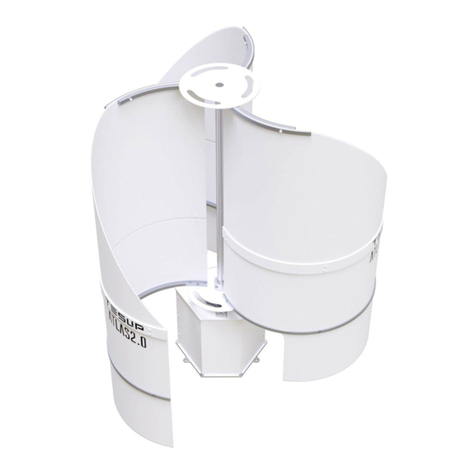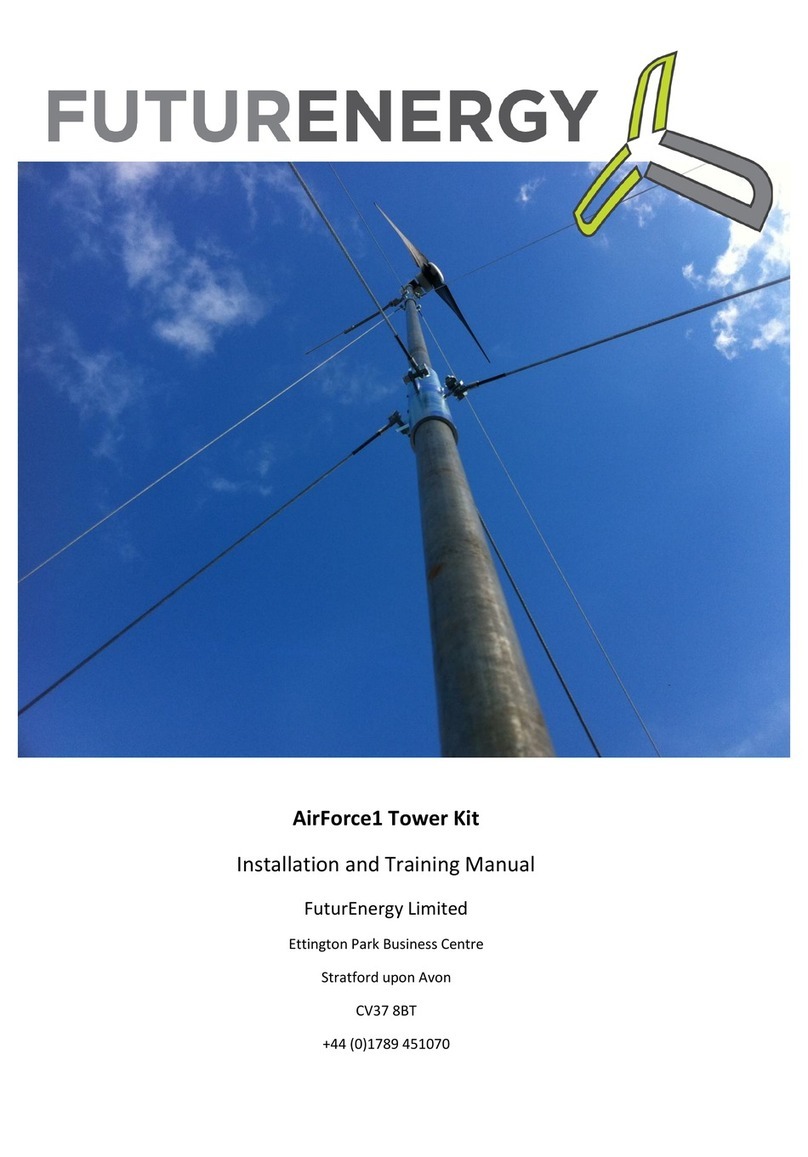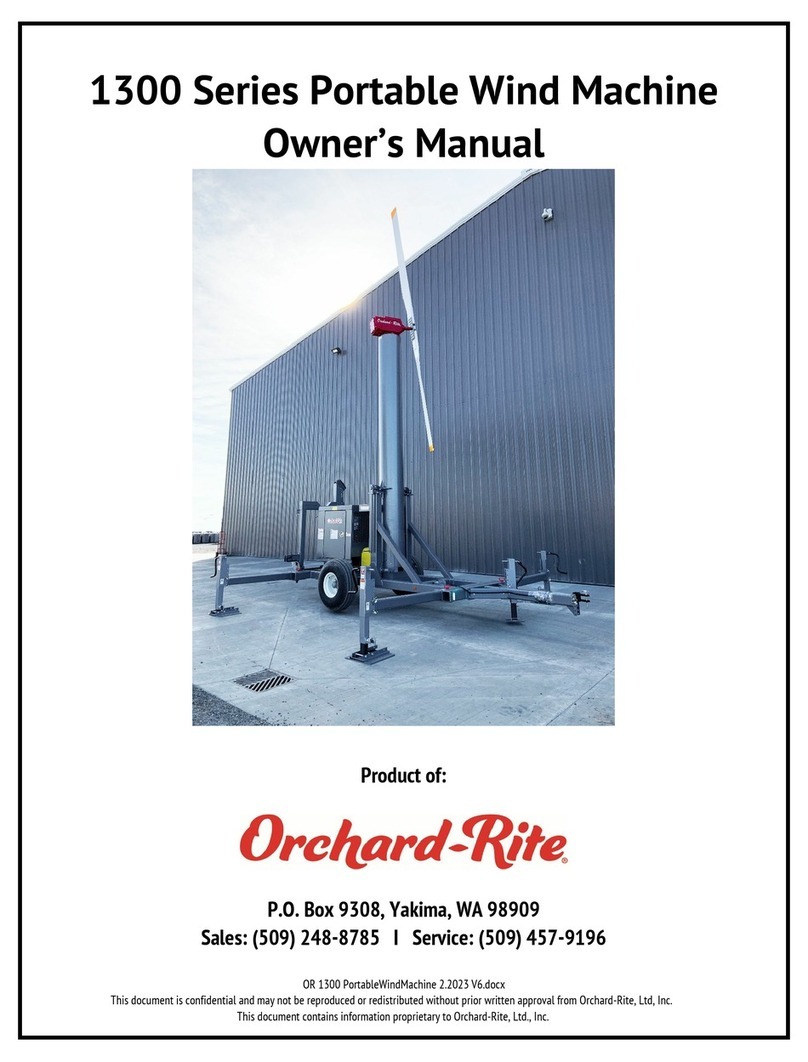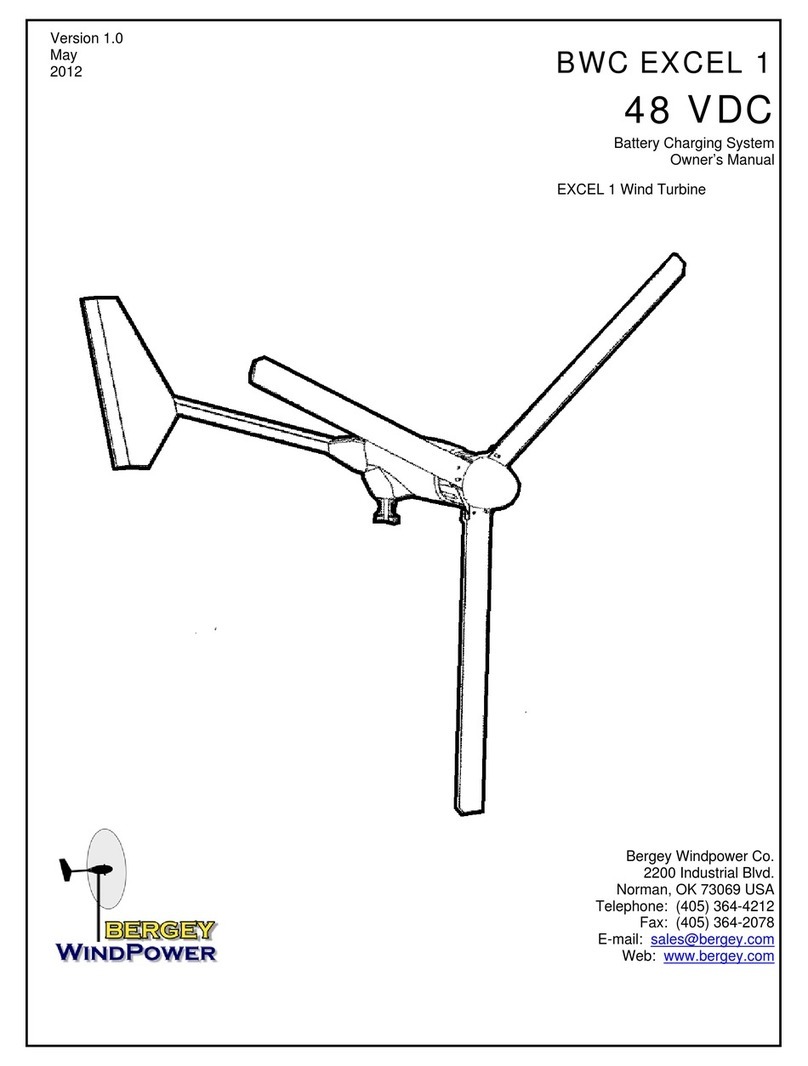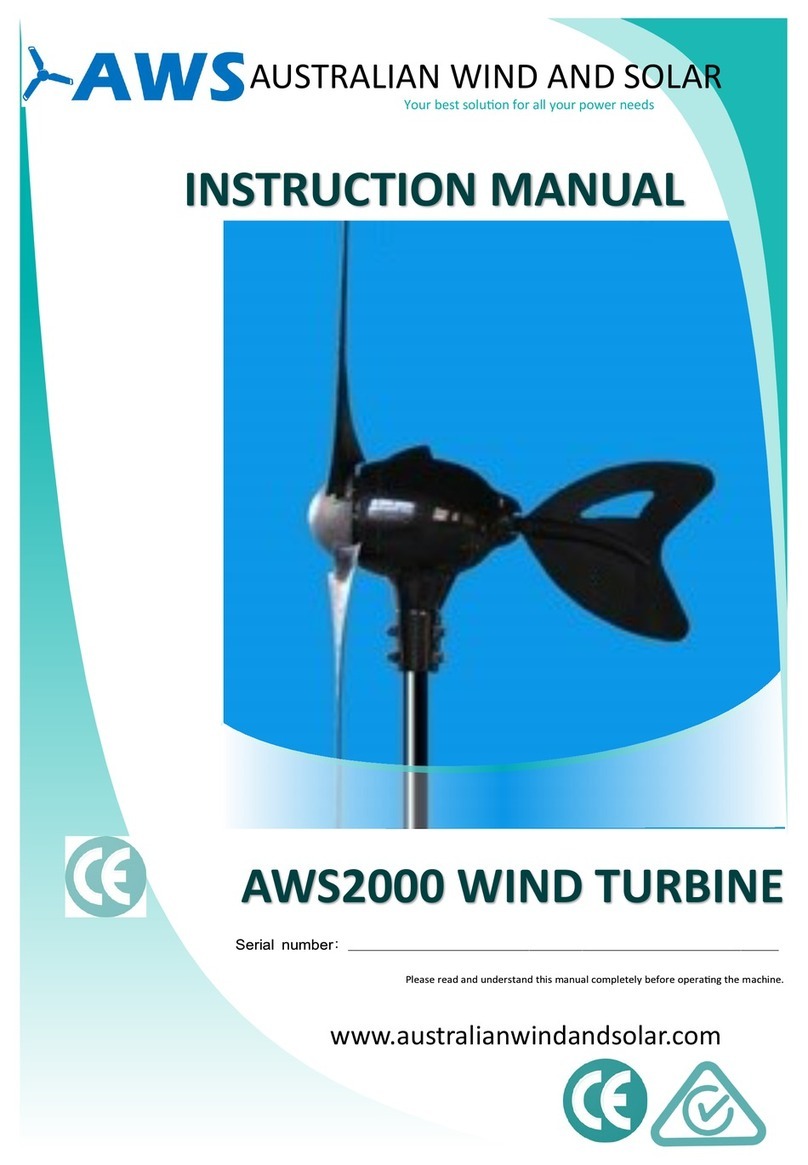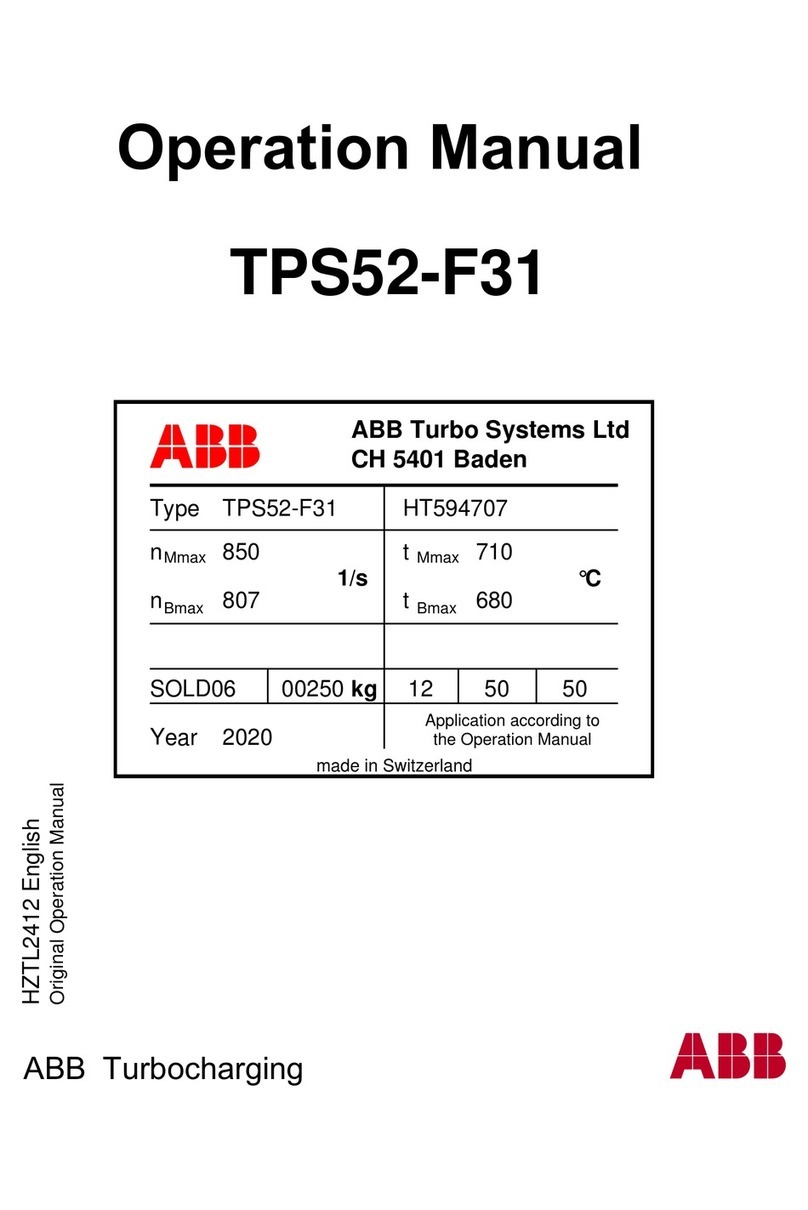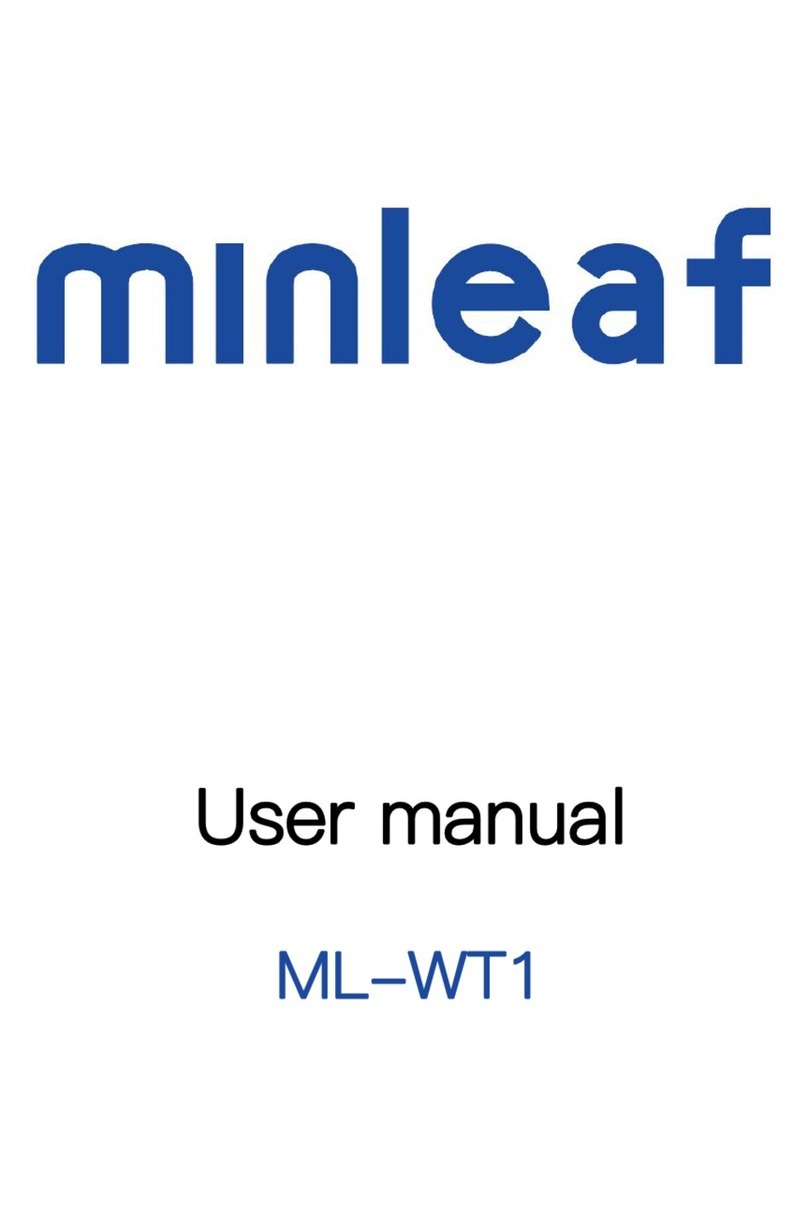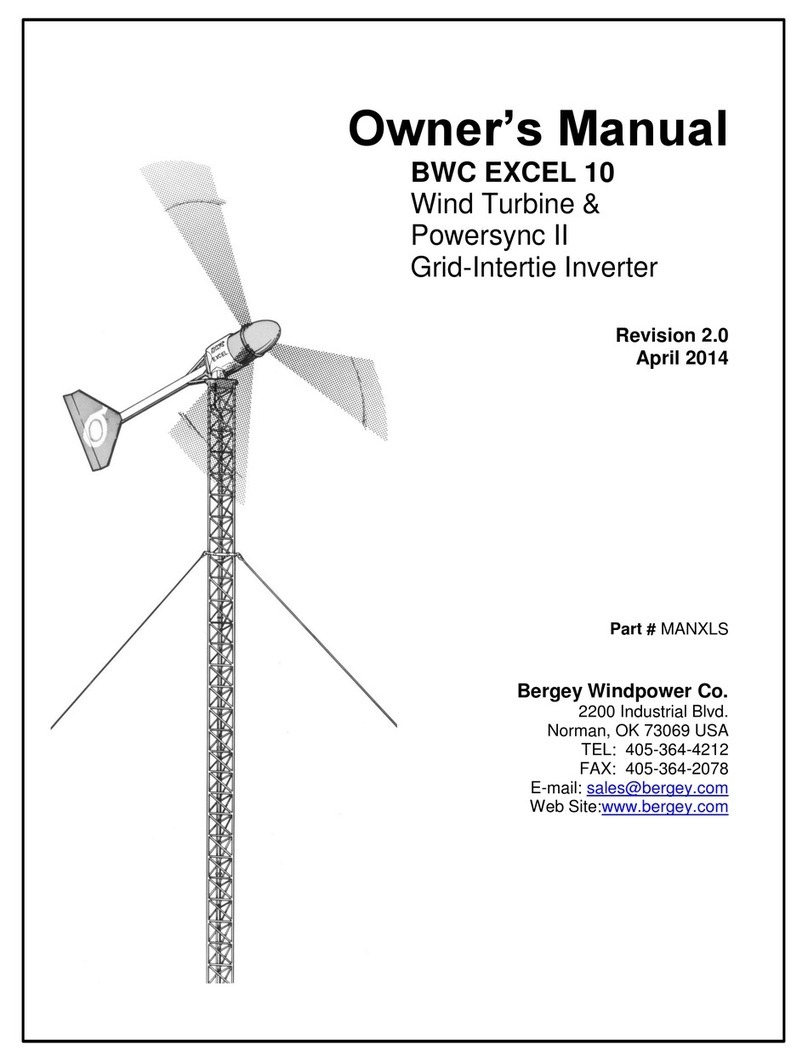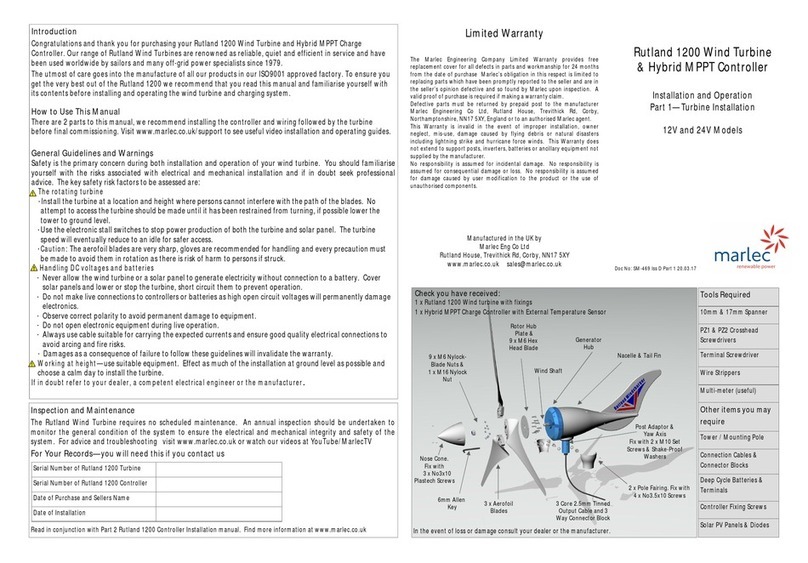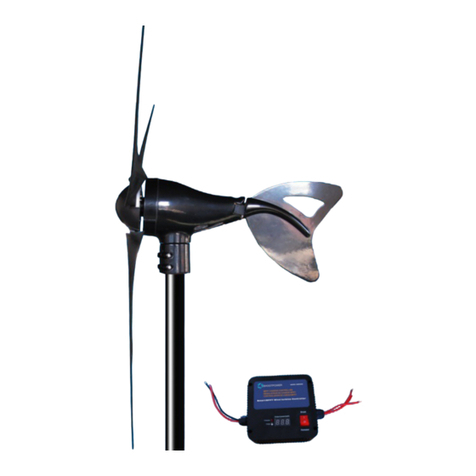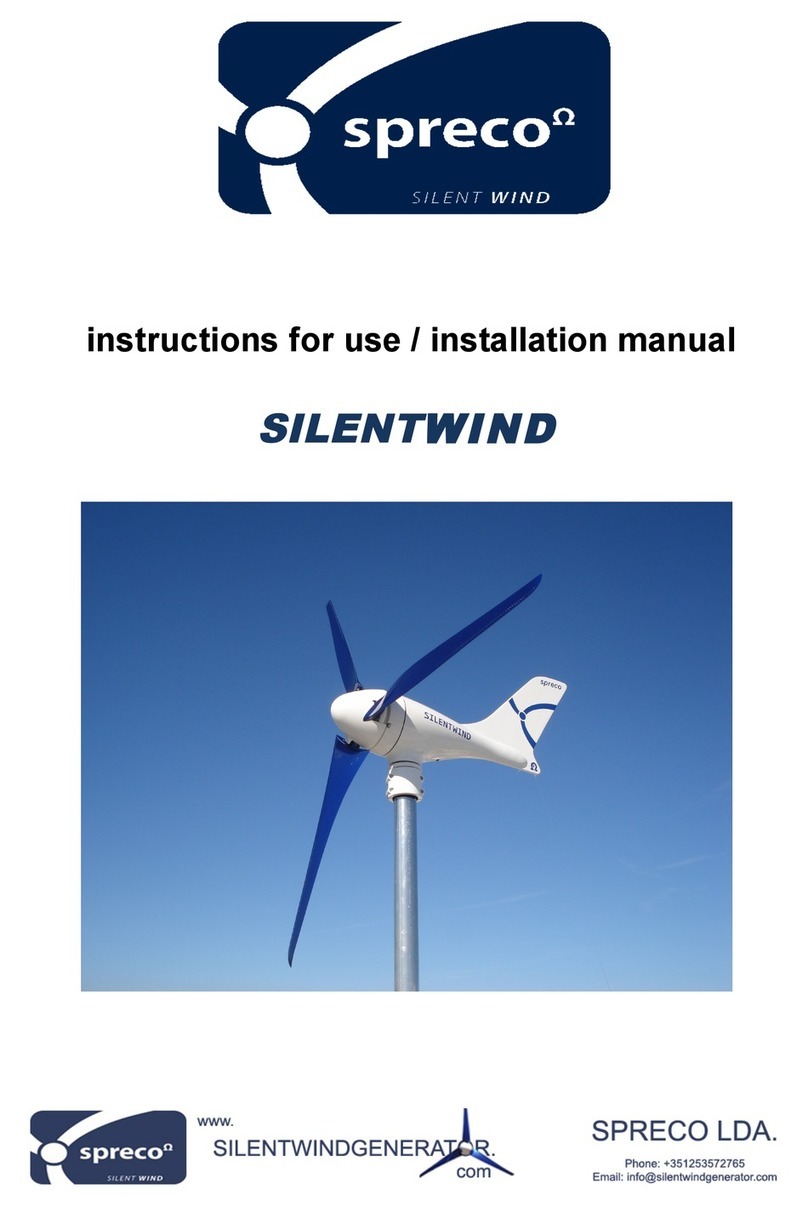5
Multimeter
Connect the positive terminal wire of the generator to the red wire of the multimeter
and connect the negative terminal wire to the black wire of the multimeter. Set the
multimeter to measure DC voltage at the lowest setting. The number shown on the
multimeter is the amount of electrical potential, measured in volts, that the turbine
generates. The energy being produced is proportional to the voltage. If there is no
reading, shift the setting to the next higher voltage setting. Keep doing this, as
needed, until you get a voltage reading.
Determine Polarity
To determine the proper polarity of the turbine, connect it to a voltage probe, Vernier
Energy Sensor, KidWind Power Output Board, or a multimeter. If the voltage
reading is positive, the lead connected to the red voltage probe wire, red Energy
Sensor terminal or red multimeter wire comes from the positive terminal. If the
voltage reading is negative, the lead connected to the red voltage probe wire, red
Energy Sensor terminal, or red multimeter wire comes from the negative terminal.
When using the Power Output Board, a small LED marked “reverse polarity" will
light if the wires are connected with the positive generator wire attached to the
negative terminal and the negative generator wire hooked up to the positive terminal.
It is a good idea to mark the wires with tape so you know which is positive and
which is negative.
How much electricity do various devices require?
LEDs require at least 1.6 volts to light. Polarity is important with LEDs, so if it is
not working, try reversing the LED connections.
Small DC motors need 0.6–0.8 volts.
Lifting weight with wind energy
Lifting weights with the wind turbine is another great way to explore wind energy.
Convert the Basic Wind Experiment Kit to a weightlifting turbine.
1. Tie the string to the spool, taping it down so it does not slide. Add one hex lock to
each end of the spool, pressing them into the spindle hole.
2. Affix the plastic bucket to the other end of the string, using the holes pre-drilled
in the bucket.
3. Remove the 32-tooth gear from the hex shaft. Push the spool onto the hex shaft.
See construction video online
For help with assembly, watch a short video at www.vernier.com/kw-bwx
Experiment Ideas
Your Basic Wind Experiment Kit allows you to perform many different experiments
with wind energy. Here are two ideas to get you started:
Experiment with the blade pitch
When the blades are flat against the wind (0°), the air will push the blades in the
same direction as the wind. This results in a minimum transfer of energy from the
moving air. When the blades are at 90°, there is no push at all from the moving air,
6
since the wind flows past the blades instead of pushing on their surface. Between
these two extremes, some of the force pushes each blade sideways while some force
pushes them backwards.
Experimentally determine what pitch angle lights the LED the brightest or generates
the most energy, or lifts the most weight. Use the same wind speed for the entire
experiment.
Experiment with the number of blades
For this experiment it is very important to keep the pitch of the blades constant. It
can be easier to start with one or two blades and then increase and record power
output as more blades are added.
When testing the number of blades on the weightlifter, one strategy is to keep the
weight constant while altering the blade number. Then measure the time it takes to
lift the weight to determine which blade setup produces the most power. The faster it
lifts the weights the more power generated.
Troubleshooting
The turbine does not spin when I put my turbine in front of the fan
Make sure all the blades have their pitch oriented in the same direction and are not
“flat” to the wind. Make sure the blades are not in contact with something that is
preventing them from moving.
The turbine slows down when I attach it to a load (resistor, pump, bulb, motor,
etc.)
This is expected. Electrical loads all have some resistance. Resistance makes it
harder to push electrons through the circuit, which means it is harder for the
generator to turn.
The voltage readings keep changing
Some fluctuation is normal. Here are some things you can work on to reduce the
variability of the voltage measurement:
Make sure the blades are not changing shape as they spin. You may need to use a
stiffer blade material.
The wind produced by the fan may be fluctuating.
Your blades may be unbalanced, unevenly distributed, or producing unequal
amounts of drag.
The readings on my multimeter are negative
The meter is reading the polarity of the wires. As your turbine spins in one direction
one wire will be the positive lead and the other wire will be the negative lead. If you
spin your turbine the other direction the polarity of the wires will be reversed. For
LEDs and Fuel Cells hooking up the correct polarity matters—on other items the
polarity is not critical.
If you prefer not to have negative values, reverse the wires relative to your
measuring device.
Based on the power in the wind equation, longer blades should generate more
power but mine generate less power.
The blades on your turbine may be bigger than the diameter of the fan. If that is the
case, the extra length is only adding drag so the blades will slow down. Additionally,


